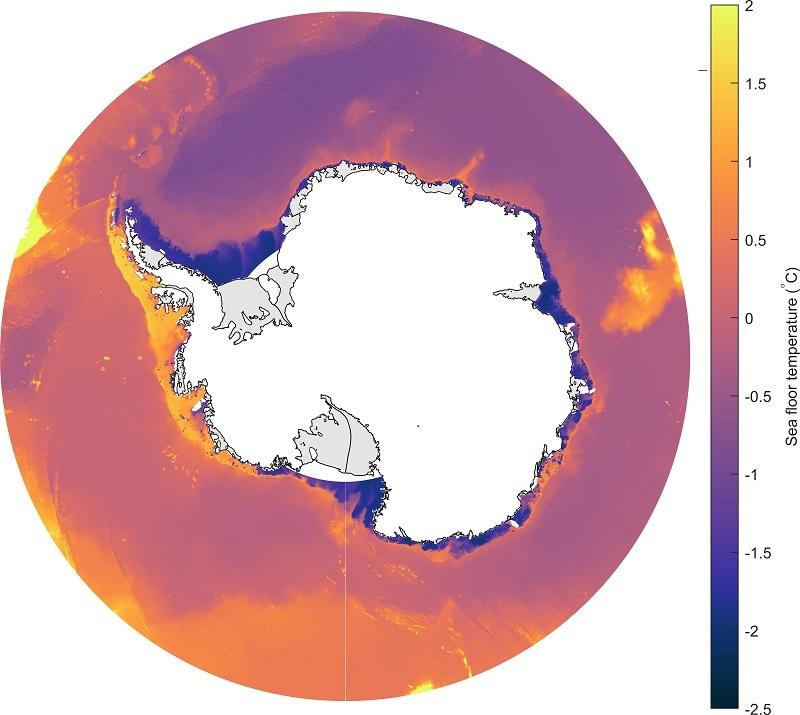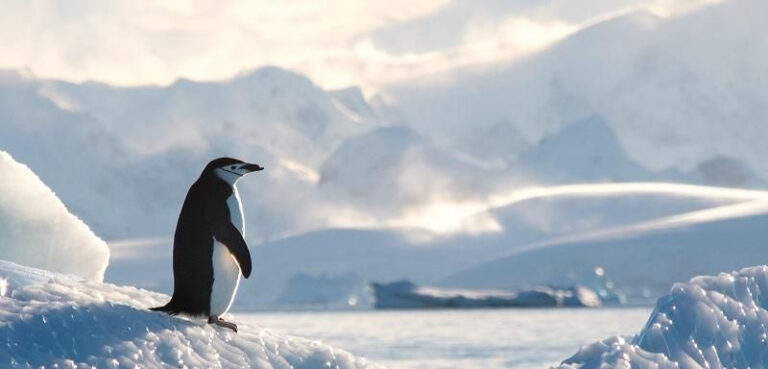University of Leeds scientists have reported that 71 of the 162 ice shelves that surround Antarctica have reduced in volume over 25 years from 1997 to 2021, with a net release of 7.5 trillion metric tons of meltwater into the oceans.
The scientists found that almost all the ice shelves on the western side of Antarctica experienced ice loss. In contrast, most of the ice shelves on the eastern side stayed the same or increased in volume.
Over the 25 years, they calculated almost 67 trillion metric tons of ice was exported to the ocean, which was offset by 59 trillion metric tons of ice being added to the ice shelves, giving a net loss of 7.5 trillion metric tons. Their paper – “Annual mass budget of Antarctic ice shelves from 1997 to 2021” was published in the journal Science Advances.
Dr Benjamin Davison, a research fellow at the University of Leeds who led the study, said, “There is a mixed picture of ice-shelf deterioration, and this is to do with the ocean temperature and ocean currents around Antarctica. The western half is exposed to warm water, which can rapidly erode the ice shelves from below, whereas much of East Antarctica is currently protected from nearby warm water by a band of cold water at the coast.”
Antarctica is a vast continent – 50 times the size of the UK – and the seas on the western side experience different currents and winds than on the east, and this is driving warmer water underneath the ice shelves on the western flank.
Dr Davison said, “We expected most ice shelves to go through cycles of rapid, but short-lived shrinking, then to regrow slowly. Instead, we see that almost half of them are shrinking with no sign of recovery.” He believes human-induced global warming is likely to be a key factor in the loss of the ice because if it were due to natural variations in climate patterns, there would have been some signs of ice regrowth on the western ice shelves.
He pointed out that ice shelves float on the seas surrounding Antarctica and are extensions to the ice sheet that covers much of the continent. The ice shelves act as giant “plugs” at the end of glaciers, slowing down the flow of ice draining into the oceans. When the ice shelves thin or reduce in size, these plugs weaken with the result that the rate of ice lost from the glaciers increases.
Some of the biggest ice losses were observed on the Getz Ice Shelf, where 1.9 trillion metric tons of ice were lost over the 25-year study period. Just 5% of that was due to calving, where large chunks of ice break away from the shelf and move into the ocean. The rest was due to melting at the base of the ice shelf.
Similarly on the Pine Island Ice Shelf, 1.3 trillion metric tons of ice were lost. Around a third of that loss – 450 billion metric tons – was due to calving. The rest is due to melting from the underside of the ice shelf. In contrast, the Amery Ice Shelf – on the other side of Antarctica – gained 1.2 trillion metric tons of ice. Much colder waters surround it.
The researchers analyzed over 100,000 satellite radar images to produce this major assessment of the state of the health of the ice shelves. If the ice shelves disappear or even diminish, there will be major knock-on effects for the ice system in Antarctica and for global ocean circulation, the giant ‘conveyor belt’ which moves nutrients as well as heat and carbon from this sensitive polar ecosystem.
Video Credit: Planetary Visions/European Space Agency
Water released into the ocean from the ice shelves and from the glaciers is freshwater. Over the 25-year study period, the researchers estimated that 66.9 trillion metric tons of freshwater went into the Southern Ocean around Antarctica from the ice shelves alone. In the Southern Ocean, dense salty water sinks to the ocean floor as part of the global ocean conveyor belt. This sinking of water acts as one of the engines that drive the ocean conveyor belt. Freshwater from Antarctica dilutes the salty ocean water, making it fresher and lighter, which takes longer to sink and this can weaken the ocean circulation system. A different study, published in the journal Nature Climate Change, shows that this process may already be underway.
Professor Anna Hogg, also from the University of Leeds and a co-author of the study, said, “The study has generated important findings. We tend to think of ice shelves as going through cyclical advances and retreats. Instead, we are seeing a steady attrition due to melting and calving. Many of the ice shelves have deteriorated a lot: 48 lost more than 30% of their initial mass over just 25 years. This is further evidence that Antarctica is changing because the climate is warming. The study provides a baseline measure from which we can see further changes that may emerge as the climate gets warmer.”
Information about what is happening in Antarctica in recent years has largely come from the CryoSat-2 and Sentinel-1 satellites, which can monitor Antarctica even when it is cloudy and through the long polar nights. CryoSat-2, launched in 2010, was the first European Space Agency Explorer mission and the first dedicated to monitoring the Earth’s polar ice sheets and glaciers.
Dr Mark Drinkwater, head of earth and mission science at the European Space Agency (ESA), said, “Monitoring and tracking climate change across the vast Antarctic continent requires a satellite system that captures data routinely throughout the year. The European Copernicus Programme’s Sentinel-1 satellite mission has fulfilled this need. Together with the historical data acquired by its ESA predecessors ERS-1, -2 and Envisat, Sentinel-1 has revolutionized our ability to take stock of floating ice shelves, as a bellwether for mass balance and the health of the Antarctic ice sheet. In the near future, we will further augment Antarctic monitoring with three new polar-focused missions CRISTAL, CIMR and ROSE-L.”
For more key polar weather updates from the meteorological technology industry, click here.




